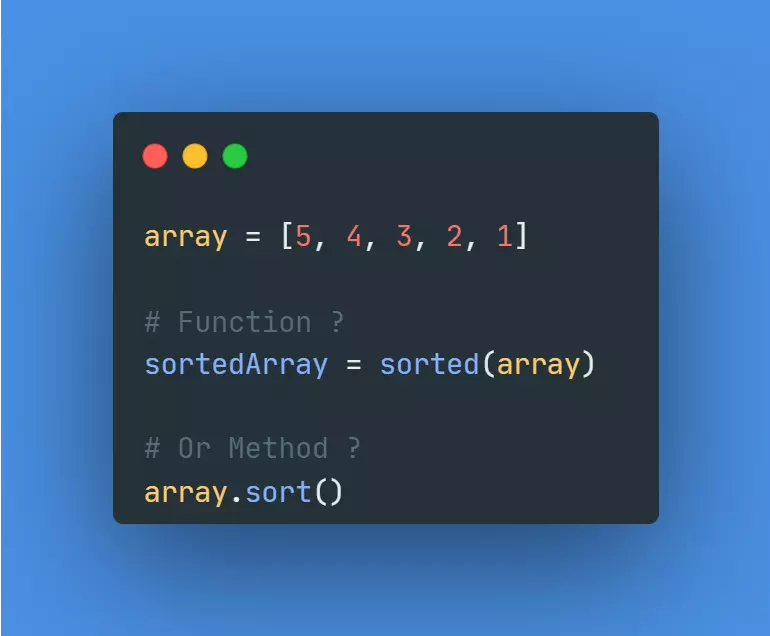A small thing nobody taught you in Python

Have you ever noticed that some stuffs like lower(), upper(), sort() etc. are called like this variable.lower() or variable.sort(). But most of the other function are called like this len(variable), str(variable).
What’s the difference?
Actually, the first set of examples are actually called attributes or methods.
Let’s take the example of lower(), which acts on the str datatype.
str datatype is actually a class and has a number of functions inside it. These functions are called attribute and can be accessed by using the . notation.
| |
So, back to our example:
| |
On the other hand, the latter examples were all functions, like your normal def func() thing. They perform a certain task on the argument that is passed to them. The task may or may not be unique to a particular datatype.
| |
I hope you leaned something new today 😄.
 Chase Inc.
Chase Inc.